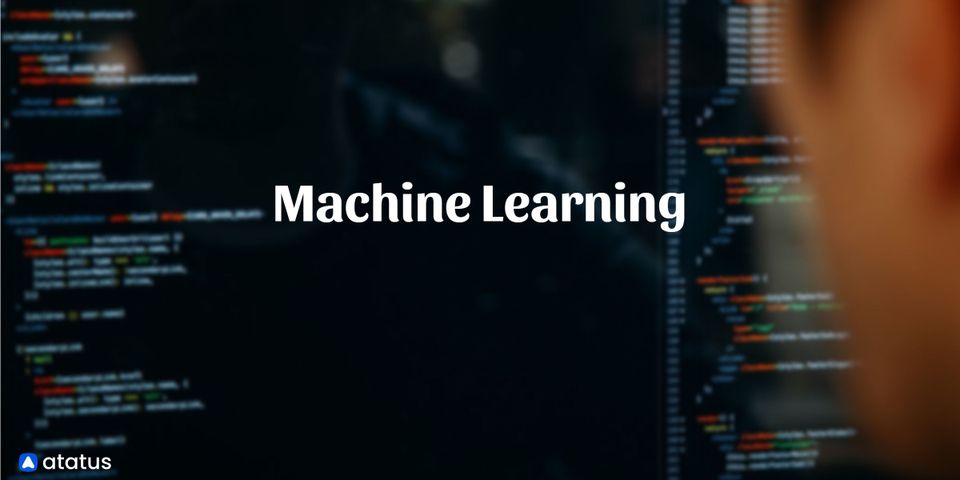Machine learning provides businesses with a picture of customer behaviour trends and business operating patterns, as well as assisting in the development of new products. Many of today's most successful organisations, such as Google, Facebook, and Uber, use machine learning. Machine learning has become a critical competitive differentiator for many organizations.
We will go over the following:
- What is Machine Learning?
- Methods of Machine Learning
- How does Machine Learning Works?
- What Factors Should You Consider While Selecting a Machine Learning Model?
- Machine Learning vs. Deep Learning vs. Neural Networks
- Future of Machine Learning
What is Machine Learning?
Machine learning is the study of computer algorithms considered to be a subset of artificial intelligence that allow computers to learn and develop without having to be programmed directly. The construction of computer programs that can access data and learn on their own is what machine learning is all about.
The learning process begins with observations or data, such as direct experience, examples, or teaching, so that we can look for patterns in data and make better decisions in the future based on our examples. The overarching goal is for computers to learn on their own, without the need for human intervention, and to adapt their behaviour as a result.

Machine learning today is not the same as machine learning in the past, due to advances in computing technology. It was motivated by pattern recognition and the notion that computers may learn to perform tasks without being explicitly taught how to do so; artificial intelligence researchers wanted to see if computers could learn from data.
Since models can change autonomously as they are exposed to new data, the iterative feature of machine learning is critical. They make reliable, repeatable decisions and outcomes by using previous computations. It's not a new science, but it's getting new traction.
Instead of being expressly programmed to do so, it focuses on educating computers to learn from data and improve with experience. Machine learning algorithms are trained to spot patterns and correlations in large data sets and to make the best decisions and predictions based on these discoveries.
Machine learning applications grow with use, and the more data they have, the more accurate they become. Machine learning is used in a variety of places, including our homes, shopping carts, entertainment media, and healthcare.
Methods of Machine Learning
Traditional machine learning is defined as the process through which an algorithm learns to improve its prediction accuracy. The four basic approaches are supervised, unsupervised, semi-supervised, and reinforcement learning.
#1 Supervised Machine Learning
It can apply what it has learned in the past to new data using tagged examples in order to predict future events. The learning algorithm develops an inferred function based on the examination of a given training dataset to provide predictions about the output values.
After proper training, the system may provide targets for any new input. The learning algorithm may also discover errors by comparing its output to the proper, intended result, allowing the model to be tweaked as needed.
#2 Unsupervised Machine Learning
When the information used to train is neither classified nor labelled, these are employed. Unsupervised learning investigates how computers might infer a function from unlabelled data to describe a hidden structure.
Instead of determining the proper output, the system examines the input and employs datasets to infer hidden structures from unlabelled data.
#3 Semi-supervised Machine Learning
Since they use both labelled and unlabelled data for training – often a small quantity of labelled data and a big amount of unlabelled data – it falls between supervised and unsupervised learning. This method can improve learning accuracy greatly in systems that use it.
When the acquired labelled data requires the employment of trained and adequate resources to train/learn from it, semi-supervised learning is often applied. Obtaining unlabelled data, on the other hand, usually does not need additional resources.
#4 Reinforcement Machine Learning
It's a style of learning in which the learner interacts with the environment by doing activities and identifying errors or rewards. Trial and error search and delayed reward are the most crucial aspects of reinforcement learning.
In order to increase their productivity, this technology allows machines and software agents to automatically select the appropriate behaviour in a given situation. For the agent to learn which action is better, simple reward feedback is required; this is known as the reinforcement signal.
How does Machine Learning Works?
Three parts make up a machine learning algorithm.
Step 1: A Decision Process
In general, machine learning algorithms are employed to make predictions or classifications. Your algorithm will generate an estimate about a pattern in the data based on some input data, which can be labelled or unlabelled.
Step 2: An Error Function
To evaluate the model's prediction, an error function is used.
Step 3: A Model Optimization Process
If the model can match the data points in the training set better, weights are adjusted to reduce the distance between the known example and the model prediction. The algorithm will repeat this assessment and optimise the method, updating weights on its own until a particular level of accuracy is reached.
What Factors Should You Consider While Selecting a Machine Learning Model?
If not tackled deliberately, the process of selecting the best machine learning model to solve a problem can be time-consuming.
Align the problem with prospective data inputs that should be taken into account when developing a solution. This step needs the assistance of data scientists and professionals with a thorough understanding of the situation.
Gather information, format it, and label it if necessary. Data scientists usually lead this process, with assistance from data wranglers.
Choose the algorithms to use and put them through their paces to see how well they work. Data scientists are usually in charge of this step.
Continue to fine-tune the outputs until they are accurate enough to be useful. This process is typically carried out by data scientists with input from professionals with in-depth knowledge of the topic.
Machine Learning vs. Deep Learning vs. Neural Networks
Since deep learning and machine learning are often used interchangeably, it's important to understand the differences. Machine learning, deep learning, and neural networks are examples of artificial intelligence subfields. The neural network is a branch of deep learning and deep learning is a branch of machine learning.
Deep learning and machine learning differ in how each algorithm learns. Deep learning automates a large chunk of the feature extraction process, reducing the need for manual human intervention and enabling the use of larger data sets.
Classical machine learning, often known as "non-deep" machine learning, is more reliant on human assistance to learn. The set of features used by human experts to interpret the distinctions between data sources is usually determined by more structured data.
Labelled datasets, also known as supervised learning, can help "deep" machine learning algorithms, but they aren't always necessary. It can consume unstructured data in its raw form and automatically determine the set of features that distinguish distinct types of data.
Unlike machine learning, it does not require human intervention to analyse data, allowing us to scale machine learning in more creative ways. In domains including computer vision, natural language processing, and speech recognition, deep learning and neural networks are credited with accelerating progress.
An input layer, one or more hidden layers, and an output layer make up artificial neural networks (ANNs), often known as neural networks. Each node, or artificial neuron, is linked to the others and has its own weight and threshold.
When a node's output reaches a specific level, it is activated, and data is transferred to the network's next layer. Otherwise, no data is transferred to the next tier of the network. The term "deep learning" simply refers to the number of layers in a neural network. A deep neural network, also known as a deep learning algorithm, is a neural network having more than three layers, including inputs and outputs. A two- or three-layer neural network is referred to as a basic neural network.
Future of Machine Learning
Machine learning algorithms have been around for decades, but their popularity has grown in lockstep with the rise of artificial intelligence. Deep learning models are at the heart of today's most sophisticated AI systems.
Machine learning platforms are one of the most competitive areas in enterprise technology, with major vendors such as Amazon, Google, Microsoft, IBM, and others racing to sign customers up for platform services that cover the full range of machine learning activities, such as data collection, data preparation, data classification, model building, training, and application deployment.
The machine learning platform conflicts will only grow as machine learning becomes more important to company operations and AI becomes more feasible in enterprise settings.
Deep learning and artificial intelligence research are increasingly focusing on developing more broad applications. In order to build an algorithm that is highly optimised to accomplish one task, today's AI models require significant training. Other academics, on the other hand, are researching ways to make models more adaptable, such as strategies that allow a computer to use context learned from one task to other, unrelated tasks.
Conclusion
Machine learning allows for the analysis of large amounts of data. While it is often faster and more accurate at recognising profitable opportunities or risky dangers, complete training may take more time and money. When machine learning is combined with AI and cognitive technologies, it can be even more successful at processing enormous amounts of data.
Monitor Your Entire Application with Atatus
Atatus provides a set of performance measurement tools to monitor and improve the performance of your frontend, backends, logs and infrastructure applications in real-time. Our platform can capture millions of performance data points from your applications, allowing you to quickly resolve issues and ensure digital customer experiences.

Atatus can be beneficial to your business, which provides a comprehensive view of your application, including how it works, where performance bottlenecks exist, which users are most impacted, and which errors break your code for your frontend, backend, and infrastructure.





